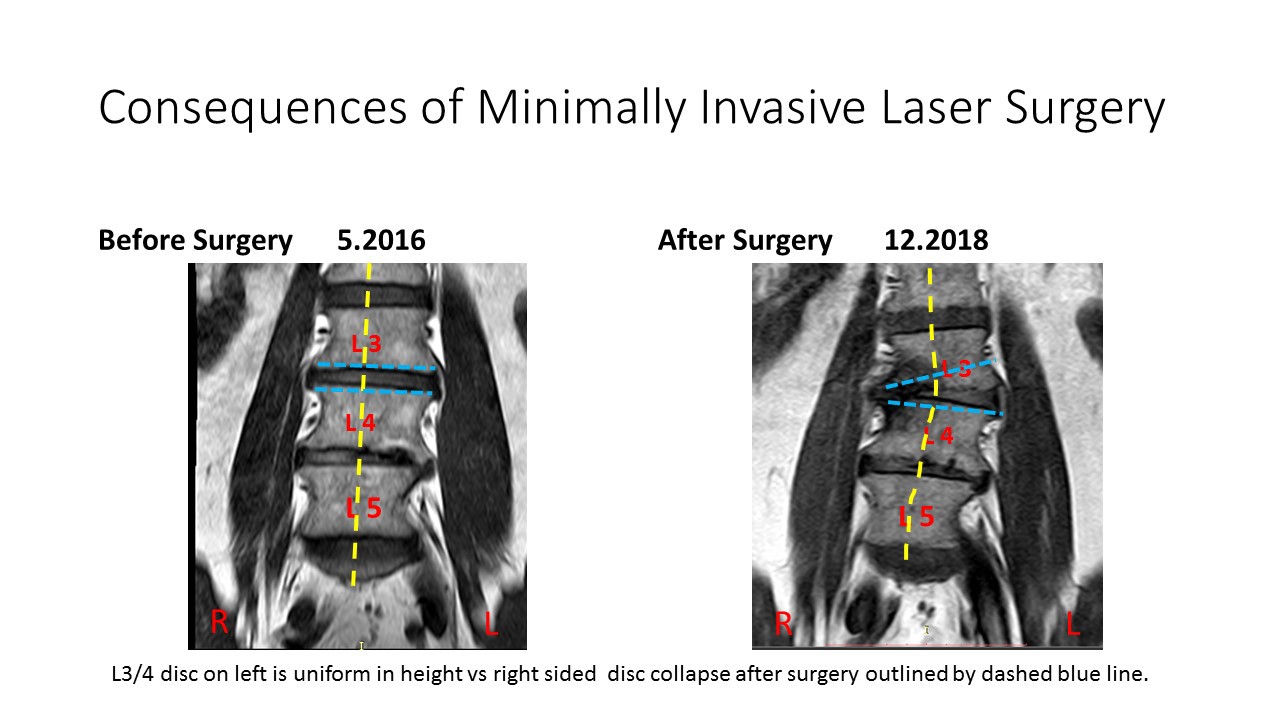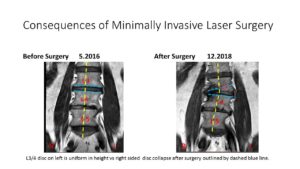Spine surgery has lasting consequences, as it forever changes the lumbar anatomy and biomechanics. It’s not like a bad haircut which will grow out over time. The anatomical changes are permanent. The consequences of minimally invasive spine surgery are truly something to talk about directly.
We have all seen the ads where a patient who has debilitating, crippling spinal pain is miraculously transformed by minimally invasive surgery. No large scars just a small band aid. All the patient’s pain and dysfunction is eliminated by this minimal procedure. Let’s dig in.
Meet RC

RC is a 68 year old patient with a 4-year history of low back pain, aggravated by golf and prolonged sitting. In March of 2018, he opted to undergo a minimally invasive spine procedure with the hopes of eliminating his low back pain. The surgeons widened the bony area where the exiting nerve root emerged (foraminotomy) removed the lamina (laminectomy), removed part of the facet (facetectomy) and trimmed the disc (discectomy).
Outcome From Minimally Invasive Surgery
Rather than the miraculous resolution of all his pain, RC regrettably had an increase in his low back pain and new onset of leg pain. The illustration below highlights the changes after the surgery.
Image on the left is an MRI image of the lumbar spine from a frontal view prior to surgery. The L3, L4, L5 intevertegral bodies are identified in red. In between each intervertebral body is a dark wafer which is the disc. Note in the image to the left, the L3/4 disc, which is outlined by dashed blue is uniform in shape.
The MRI on the right is after surgery and is remarkable for right sided narrowing and collapse of the L3/4 disc which is outlined by the dashed blue line. The disc is no longer waver shaped, but pie shaped, due to removal of critical structures during the minimally invasive surgery. This collapse in turn changes the alignment of the lumbar spine, which is outlined by the yellow line. Preoperative the spine is straight, whereas after surgery the spine is misaligned and curved.
It is similar to felling a tree. A wide cut is made on the side you want the tree to fall.

More likely than not, over time RC’s spine will continue to curve due to the instability created by “minimally invasive surgery”. This curve will put additional pressure on the exiting nerve root which is why he has new onset leg pain.
If you have ongoing low back and leg pain, please recognize that the anatomical changes associated with surgery are permanent. Surgery may make things worse, as was the case with RC. An alternative is X-ray guided injections of platelets or bone marrow concentrates by board certified, fellowship trained physicians at the Centeno-Schultz Clinic. You owe it to yourself and your future to thoroughly examine your options.
Here our are the outcomes; https://regenexx.com/results/live-patient-outcomes/lumbar-spine-outcomes/


